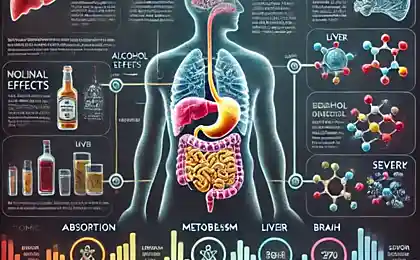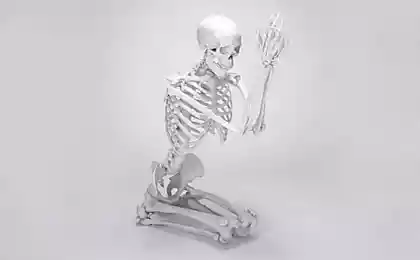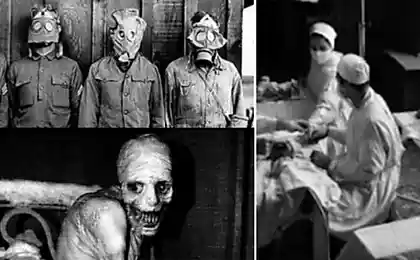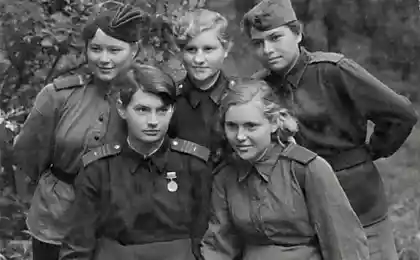1801
The history of anesthesia

Disease and pain, unfortunately, always persecuted people. Since ancient times, mankind has dreamed to get rid of the pain. Often the treatment afforded more suffering than the disease itself. For anesthesia operations healers and doctors have long used herbal teas and infusions of poppy and mandrake.
In Russia, reposition hernia as anesthesia used tobacco enemas. Widely used alcohol. These methods have contributed to "stun" the patient, dulling the pain, but they certainly can not completely numb the surgery and were themselves dangerous to health.
Lack of pain relief inhibited the development of surgery. In the age before anesthesia, surgeons operate only on the limbs and the body surface. All surgeons are owned by the same set of rather primitive operations.
The good doctor was different from poor operating speed. NIPirogov produced amputation in 3 minutes, mastectomy - 1, 5 minutes. The surgeon Larry in the night after the battle of Borodino produced 200 amputations (hand he certainly between operations are not washed, then it was not accepted). I hate intense pain for more than 5 minutes can not be so complex and lengthy operation could not produce.
The civilization of ancient Egypt has left the oldest written evidence of attempting to use anesthesia during surgical vmeshatelstvah.V Ebers Papyrus (5th century BC), reported on the use of funds before the operation, reduces the feeling of pain: mandrake, belladonna, opium, alcohol. With minor variations, the same drugs used alone or in various combinations in ancient Greece, Rome, China, India.

In Egypt and Syria knew stunning by squeezing the neck vessels, and is used in operations of circumcision. It was a bold tested method of general anesthesia by exsanguination before deep brain fainting due to anemia. Aurelio Saverino of Naples (1580-1639), empirically, to achieve the recommended local anesthesia rubbing snow in 15 minutes. before surgery. Larrey, chief surgeon of Napoleon's army, (1766-1842) amputee soldiers on the battlefield without pain, at -29 degrees Celsius. In the early 19th century, the Japanese physician Hanaoka used for pain medication, consisting of a mixture of herbs that contain belladonna, hyoscyamine, aconitine. Under such anesthesia have successfully amputated limbs, breast, carry out operations on the face.
It would be logical to assume that the honor of the discovery of anesthesia belongs to a prominent surgeon, or even a whole school of surgery, because that's what surgeons are most needed anesthesia.
However, it is not. The world's first anesthesia is applied before anyone unknown dentist orthopedic Thomas Morton. Dr. Morton lacked in patients as people because of the fear of pain coming to remove damaged teeth and preferred to go without dentures, but would not suffer. T.Morton chosen for their experiments the perfect time for the anesthetic diethyl ether.
He is responsible came to the experiments with ether: conducting experiments on animals, then removed his teeth to his colleagues dentists, constructed a primitive anesthesia machine, and only when he was sure of success, decided to hold a public demonstration of anesthesia.

October 16, 1846 for the removal of tumors of the jaw, he invited an experienced surgeon, leaving himself a modest role in the world's first anesthesiologist. (Previous unsuccessful demonstration of anesthesia by Dr. Wells failed due to an unfortunate choice of anesthetic and Wells combining the functions of the surgeon and anesthetist in one person). The operation under general anesthesia took place in complete silence, the patient slept. Those present at the demonstration were stunned doctors, the patient woke up to deafening applause.
The news of anesthesia spread instantly across the globe. In March 1847 Russia's first operations were performed under general anesthesia. It is interesting that local anesthesia has been put into practice for half a century later.
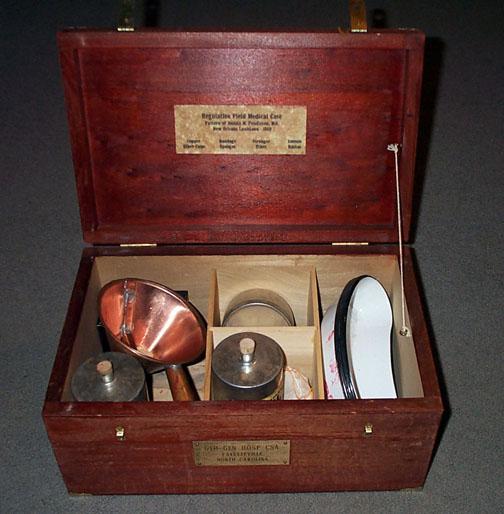
Great contribution to the anesthesiology introduced NI Pirogov (1810-1881) -veliky Russian surgeon who owes medicine many important ideas and metodami.V 1847, he summarized his experiments in the book of anesthesia, which was published throughout mire.N .I.Pirogov first pointed to the negative properties of anesthesia, the possibility of serious complications, the need for knowledge of clinical anesthesia. His works are enclosed ideas of many modern methods: intratracheal, intravenous, rectal anesthesia, spinal anesthesia.
Pain has become an integral part of hirurgii.Rodilas need for specialists. In 1847 appeared in England the first professional specialist anesthesiologist John Snow., In 1893 was created anesthetic obschestvo.Nauka developed. Doctors began to use oxygen during anesthesia, use different techniques to absorb carbon dioxide.
In 1904, it was first held gedonalovy intravenous anesthesia, which was the beginning of neingalyatsionnyh anesthesia, which developed in parallel with inhalation. General anesthesia gave a powerful impetus to the development of abdominal surgery.

In 1904 S.P.Fedorov N.P.Kravkov opened and intravenous anesthesia gedonalom. It created a lot of drugs for inhalation and intravenous anesthesia, which continues to improve and now.
In the second half of the 19th century, Claude Bernard in the experiment, and then the green at the clinic showed that during anesthesia can be improved if before it enter such drugs as morphine, calming the patient, and atropine, reduces the secretion of saliva and prevents a decrease in heart rate. Later, began to introduce anti-allergic drugs. With the development of pharmacology, the idea of medical preparations for anesthesia (premedication) has been widely developed.
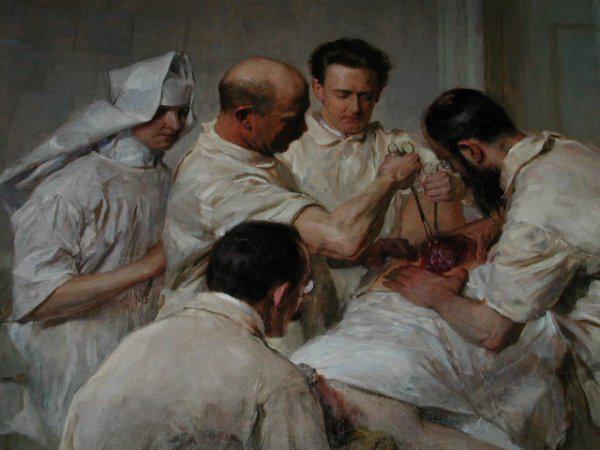
However mononarkoza, ie anesthetized by a single drug (eg, ether) could not meet the growing needs of surgeons.
S.P.Fedorov N.P.Kravkov and suggested the use of combined (mixed) anesthesia. First, cut out the consciousness of the patient gedonalom a fast and pleasant to fall asleep, continue to maintain anesthesia with chloroform. Thus it was eliminated dangerous for the patient stage of excitation, which occurs when mononarkoza chloroform. Consciousness turns off when the surface anesthesia, the response to large with a deeper and relaxation muskulatury- only under very deep anesthesia, which is dangerous for the patient. A crucial role for this issue was played in 1942 the use of Griffith and Johnson curare (poison used by the Indians to immobilize the victim). The method was called. He revolutionized the anesthesiologist. Complete relaxation of muscles, including and respiratory muscles, requiring replacement of the artificial respiration. For this was used ventilation. It was found that using this method it is possible to provide adequate gas exchange during lung surgery.
Even the most modern medication can not provide alone all the components of anesthesia (amnesia, analgesia, muscle relaxation, neurovegetative blockade) without a significant threat to the life of the patient. Therefore, modern anesthesia are multicomponent when each drug is administered in safe doses, is responsible for any specific component of anesthesia.

The idea of local anesthesia (anesthesia only the surgical site, without shutting down the consciousness of the patient) was expressed V.K.Anrepom in 1880. After applying Kohler in 1881 of cocaine for anesthesia during surgery on the eye, local anesthesia has become commonplace. Low-toxicity formulations were created in the first ochered- Novocain synthesized Eichhorn in 1905, has developed various methods of local anesthesia: infiltration anesthesia, proposed in 1889, advertisements and in 1892 Schleich, conduction anesthesia, the founder of which were AI Lukaszewicz (1886) and Oberst (1888), spinal anesthesia (Bier, 1897). The most important role played by local anesthesia tight infiltrate developed Vishnevsky and his numerous followers. Of particular significance it had for emergency and military surgery. Thanks to this method, during the numerous wars, millions wounded were spared from pain and death. The relative simplicity and safety of the method, the possibility of anesthesia by the surgeon, the discovery of new, more efficient and safe local anesthetic, making it very common in our time.
In outpatient dental practice in adults is currently used, as a rule, multi-intravenous anesthesia.
Preparation for anesthesia carried tranquilizers (reduce fear, anxiety, stress), M-holinoblokatorami (suppress unwanted reflections and reduce salivation). The main anesthesia supported by a combination of anesthetic drugs in various combinations, depending on the patient and trauma intervention (caries treatment or removal of several teeth) with narcotic and non-narcotic analgesics.
In the course of anesthesia anesthesiologist continuously monitors the patient's condition and controls the vital functions of the body.
The introduction in recent years of new drugs anesthetic practice and specific antagonists (eg dormicum and aneksat, fentanyl and naloxone) allows for controlled and safe anesthesia without adverse effects.
The anesthesiologist can maintain the desired level of anesthesia at various stages of operation with fast and pleasant awakening, without any complications.






